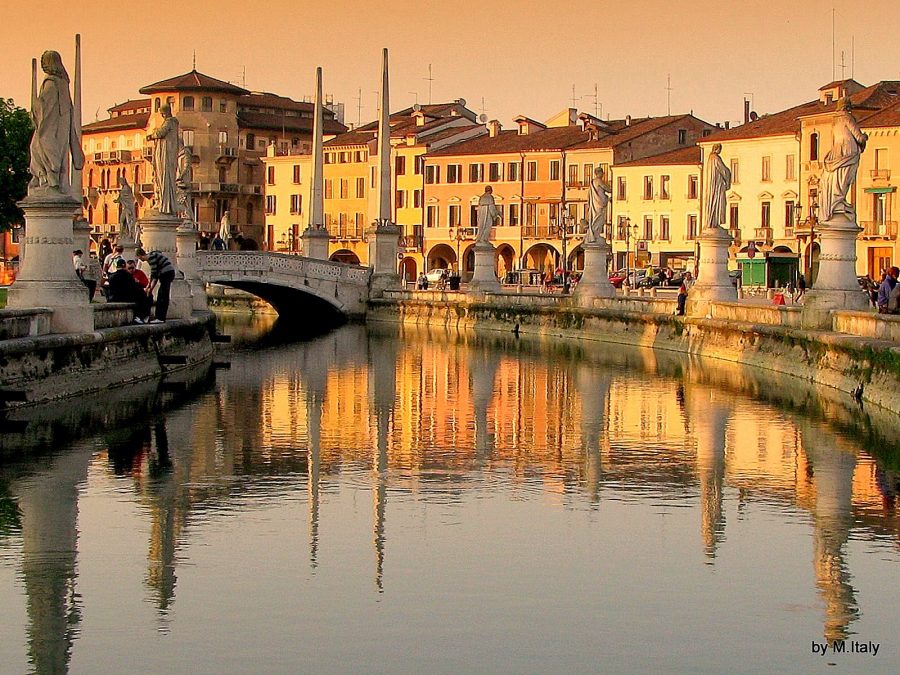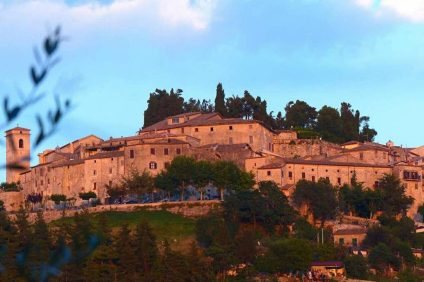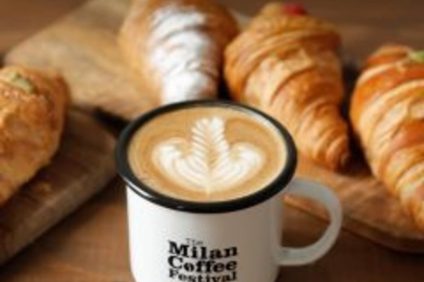Padua: “Once upon a time there was the city of three without ..“ If this were a fairy tale it would start like this.
Because Padua is not only known for what it has, but also for what it does not have.
Three, in particular, the proverbial "without": the saint without a name, the café without doors and the lawn without grass. Where the nameless saint is St. Anthony, the beloved patron to whom the Paduans refer simply as the Saint. The café without doors is the historic Caffe Pedrocchi, of 1831, in Via VIII febbraio. Originally open day and night, it represented the "parlor" where anyone, ie students, artists, writers, patriots and ordinary citizens, could stay even without consuming. A tradition still alive in one of its three rooms.
The lawn without grass is Prato della Valle, a town square among the largest in Europe where, despite the name, there are many statues but very little green.
And if these are the "without", imagine the "with"!
Among the treasures of Padua there is really everything, starting with a considerable patrimony of artistic and religious heritage, to continue with an abundance of "science and conscience", the result of the historic university vocation of the capital, and ending with delicacies of the territory, to be discovered in restaurants or to be purchased at Under the Salonein Piazza delle Erbe, which has always hosted the market among the arcades of the historian Palazzo della Ragione, the ancient seat of the Court.
A tour between the sacred and the profane ..
A tour of Padua can only start from the most precious of its treasures: the Scrovegni Chapel. Located in Piazza degli Eremitani, a few steps from the Church of the Eremitani, another masterpiece not to be missed, the chapel was frescoed by Giotto between 1303 and 1305 with works of inestimable value such as the grandiose Last Judgment or the allegories of the Vices and Virtues.
Built by Henry of Scrovegni, according to some for political ambition, for others as a fine to the family business, the chapel is considered one of the greatest masterpieces of the European fourteenth century.
La Basilica of S.Antonio it is the most important site in Padua from a religious point of view. Dedicated to the Saint of Lost Things, it was built between 1232 and 1310 precisely to preserve the relics of the beloved patron. It is one of the most important destinations for religious tourism.
A few steps from the Basilica there is a much more profane place but of similar prestige. This is theOdeo Cornaro and his lodge. Small jewel of 1524 by the Veronese architect Giovanni Maria Falconetto, is the first realization in the Veneto region of an open-air theater with a portico scene from the Roman era.
..and between science and conscience ..
A popular saying goes: “Venetians great lords, Paduans great doctors”. To testify the erudite and liberal vocation of the city, far enough away from the influences of the temporal power of Rome to devote himself assiduously and without too much interference to the study and teaching of science.
It is no coincidence thatUniversity of Padua, whose seat is from the end of 1400 a Palazzo del Bo, is one of the oldest in the world and the first to have awarded a degree to a woman, Elena Lucrezia Cornaro Piscopia, became a doctor of philosophy in 1678.
The greatest scientific personalities of all time have passed through its classrooms, philosophers, theologians and mathematicians including Copernicus and Galileo but also illustrious doctors such as Gabriele Falloppio, Bartolomeo Eustachi and Girolamo Fabrici D'Acquapendente who, in 1594, right in the University of Padua built the oldest stable anatomical theater in the world.
http://www.padovanet.it/





